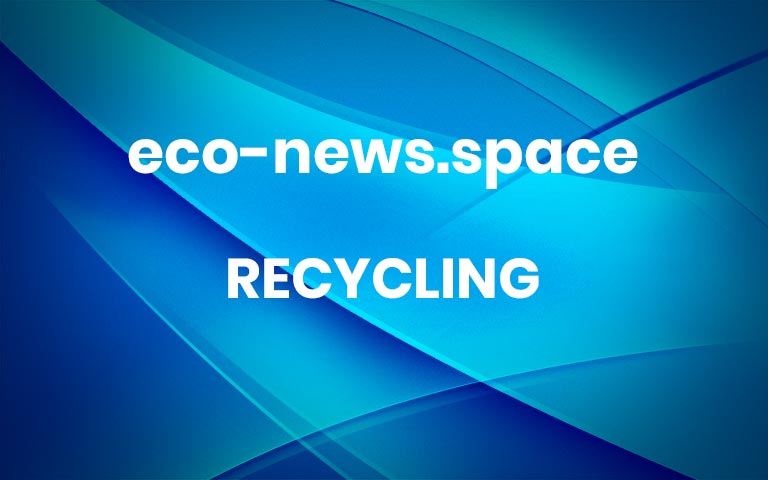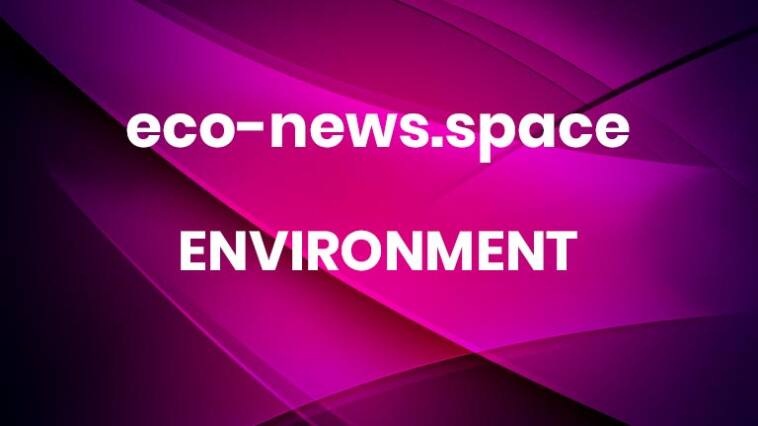HOTTEST

The accumulation of plastic waste in the oceans, soil, and even in our bodies is one of the major pollution issues of modern times, with over 5 billion tons disposed of so far. Despite major efforts to recycle plastic products, actually making use of that motley mix of materials has remained a challenging issue.
A key problem is that plastics come in so many different varieties, and chemical processes for breaking them down into a form that can be reused in some way tend to be very specific to each type of plastic. Sorting the hodgepodge of waste material, from soda bottles to detergent jugs to plastic toys, is impractical at large scale. Today, much of the plastic material gathered through recycling programs ends up in landfills anyway. Surely there’s a better way.
According to new research from MIT and elsewhere, it appears there may indeed be a much better way. A chemical process using a catalyst based on cobalt has been found to be very effective at breaking down a variety of plastics, such as polyethylene (PET) and polypropylene (PP), the two most widely produced forms of plastic, into a single product, propane. Propane can then be used as a fuel for stoves, heaters, and vehicles, or as a feedstock for the production of a wide variety of products — including new plastics, thus potentially providing at least a partial closed-loop recycling system.
The finding is described today in the open access journal JACS Au, in a paper by MIT professor of chemical engineering Yuriy Román-Leshkov, postdoc Guido Zichitella, and seven others at MIT, the SLAC National Accelerator Laboratory, and the National Renewable Energy Laboratory.
Recycling plastics has been a thorny problem, Román-Leshkov explains, because the long-chain molecules in plastics are held together by carbon bonds, which are “very stable and difficult to break apart.” Existing techniques for breaking these bonds tend to produce a random mix of different molecules, which would then require complex refining methods to separate out into usable specific compounds. “The problem is,” he says, “there’s no way to control where in the carbon chain you break the molecule.”
But to the surprise of the researchers, a catalyst made of a microporous material called a zeolite that contains cobalt nanoparticles can selectively break down various plastic polymer molecules and turn more than 80 percent of them into propane.
Although zeolites are riddled with tiny pores less than a nanometer wide (corresponding to the width of the polymer chains), a logical assumption had been that there would be little interaction at all between the zeolite and the polymers. Surprisingly, however, the opposite turned out to be the case: Not only do the polymer chains enter the pores, but the synergistic work between cobalt and the acid sites in the zeolite can break the chain at the same point. That cleavage site turned out to correspond to chopping off exactly one propane molecule without generating unwanted methane, leaving the rest of the longer hydrocarbons ready to undergo the process, again and again.
“Once you have this one compound, propane, you lessen the burden on downstream separations,” Román-Leshkov says. “That’s the essence of why we think this is quite important. We’re not only breaking the bonds, but we’re generating mainly a single product” that can be used for many different products and processes.
The materials needed for the process, zeolites and cobalt, “are both quite cheap” and widely available, he says, although today most cobalt comes from troubled areas in the Democratic Republic of Congo. Some new production is being developed in Canada, Cuba, and other places. The other material needed for the process is hydrogen, which today is mostly produced from fossil fuels but can easily be made other ways, including electrolysis of water using carbon-free electricity such as solar or wind power.
The researchers tested their system on a real example of mixed recycled plastic, producing promising results. But more testing will be needed on a greater variety of mixed waste streams to determine how much fouling takes place from various contaminants in the material — such as inks, glues, and labels attached to the plastic containers, or other nonplastic materials that get mixed in with the waste — and how that affects the long-term stability of the process.
Together with collaborators at NREL, the MIT team is also continuing to study the economics of the system, and analyzing how it can fit into today’s systems for handling plastic and mixed waste streams. “We don’t have all the answers yet,” Román-Leshkov says, but preliminary analysis looks promising.
The research team included Amani Ebrahim and Simone Bare at the SLAC National Accelerator Laboratory; Jie Zhu, Anna Brenner, Griffin Drake and Julie Rorrer at MIT; and Greg Beckham at the National Renewable Energy Laboratory. The work was supported by the U.S. Department of Energy (DoE), the Swiss National Science Foundation, and the DoE’s Office of Energy Efficiency and Renewable Energy, Advanced Manufacturing Office (AMO), and Bioenergy Technologies Office (BETO), as part of the the Bio-Optimized Technologies to keep Thermoplastics out of Landfills and the Environment (BOTTLE) Consortium. More

Our kids learn a lot of what they know at school, so there’s no better place to teach the next generation about the importance of recycling. Young people discover how to read, write, count and more at school, but recycling is one of the best lessons we can teach them. Recycling and sustainability are ideas […] More

As plastic pollution continues to mount, with growing risks to ecosystems and wildlife, manufacturers are beginning to make ambitious commitments to keep new plastics out of the environment. A growing number have signed onto the U.S. Plastics Pact, which pledges to make 100 percent of plastic packaging reusable, recyclable, or compostable, and to see 50 percent of it effectively recycled or composted, by 2025.
But for companies that make large numbers of small, disposable plastics, these pocket-sized objects are a major barrier to realizing their recycling goals.
“Think about items like your toothbrush, your travel-size toothpaste tubes, your travel-size shampoo bottles,” says Alexis Hocken, a second-year PhD student in the MIT Department of Chemical Engineering. “They end up actually slipping through the cracks of current recycling infrastructure. So you might put them in your recycling bin at home, they might make it all the way to the sorting facility, but when it comes down to actually sorting them, they never make it into a recycled plastic bale at the very end of the line.”
Now, a group of five consumer products companies is working with MIT to develop a sorting process that can keep their smallest plastic products inside the recycling chain. The companies — Colgate-Palmolive, Procter & Gamble, the Estée Lauder Companies, L’Oreal, and Haleon — all manufacture a large volume of “small format” plastics, or products less than two inches long in at least two dimensions. In a collaboration with Brad Olsen, the Alexander and I. Michael Kasser (1960) Professor of Chemical Engineering; Desiree Plata, an associate professor of civil and environmental engineering; the MIT Environmental Solutions Initiative; and the nonprofit The Sustainability Consortium, these companies are seeking a prototype sorting technology to bring to recycling facilities for large-scale testing and commercial development.
Working in Olsen’s lab, Hocken is coming to grips with the complexity of the recycling systems involved. Material recovery facilities, or MRFs, are expected to handle products in any number of shapes, sizes, and materials, and sort them into a pure stream of glass, metal, paper, or plastic. Hocken’s first step in taking on the recycling project was to tour one of these MRFs in Portland, Maine, with Olsen and Plata.
“We could literally see plastics just falling from the conveyor belts,” she says. “Leaving that tour, I thought, my gosh! There’s so much improvement that can be made. There’s so much impact that we can have on this industry.”
From designing plastics to managing them
Hocken always knew she wanted to work in engineering. Growing up in Scottsdale, Arizona, she was able to spend time in the workplace with her father, an electrical engineer who designs biomedical devices. “Seeing him working as an engineer, and how he’s solving these really important problems, definitely sparked my interest,” she says. “When it came time to begin my undergraduate degree, it was a really easy decision to choose engineering after seeing the day-to-day that my dad was doing in his career.”
At Arizona State University, she settled on chemical engineering as a major and began working with polymers, coming up with combinations of additives for 3D plastics printing that could help fine-tune how the final products behaved. But even working with plastics every day, she rarely thought about the implications of her work for the environment.
“And then in the spring of my final year at ASU, I took a class about polymers through the lens of sustainability, and that really opened my eyes,” Hocken remembers. The class was taught by Professor Timothy Long, director of the Biodesign Center for Sustainable Macromolecular Materials and Manufacturing and a well-known expert in the field of sustainable plastics. “That first session, where he laid out all of the really scary facts surrounding the plastics crisis, got me very motivated to look more into that field.”
At MIT the next year, Hocken sought out Olsen as her advisor and made plastics sustainability her focus from the start.
“Coming to MIT was my first time venturing outside of the state of Arizona for more than a three-month period,” she says. “It’s been really fun. I love living in Cambridge and the Boston area. I love my labmates. Everyone is so supportive, whether it’s to give me advice about some science that I’m trying to figure out, or just give me a pep talk if I’m feeling a little discouraged.”
A challenge to recycle
A lot of plastics research today is devoted to creating new materials — including biodegradable ones that are easier for natural ecosystems to absorb, and highly recyclable ones that hold their properties better after being melted down and recast.
But Hocken also sees a huge need for better ways to handle the plastics we’re already making. “While biodegradable and sustainable polymers represent a very important route, and I think they should certainly be further pursued, we’re still a ways away from that being a reality universally across all plastic packaging,” she says. As long as large volumes of conventional plastic are coming out of factories, we’ll need innovative ways to stop it from piling onto the mountain of plastic pollution. In one of her projects, Hocken is trying to come up with new uses for recycled plastic that take advantage of its lost strength to produce a useful, flexible material similar to rubber.
The small-format recycling project also falls in this category. The companies supporting the project have challenged the MIT team to work with their products exactly as currently manufactured — especially because their competitors use similar packaging materials that will also need to be covered by any solution the MIT team devises.
The challenge is a large one. To kick the project off, the participating companies sent the MIT team a wide range of small-format products that need to make it through the sorting process. These include containers for lip balm, deodorant, pills, and shampoo, and disposable tools like toothbrushes and flossing picks. “A constraint, or problem I foresee, is just how variable the shapes are,” says Hocken. “A flossing pick versus a toothbrush are very different shapes.”
Nor are they all made of the same kind of plastic. Many are made of polyethylene terephthalate (PET, type 1 in the recycling label system) or high-density polyethylene (HDPE, type 2), but nearly all of the seven recycling categories are represented among the sample products. The team’s solution will have to handle them all.
Another obstacle is that the sorting process at a large MRF is already very complex and requires a heavy investment in equipment. The waste stream typically goes through a “glass breaker screen” that shatters glass and collects the shards; a series of rotating rubber stars to pull out two-dimensional objects, collecting paper and cardboard; a system of magnets and eddy currents to attract or repel different metals; and finally, a series of optical sorters that use infrared spectroscopy to identify the various types of plastics, then blow them down different chutes with jets of air. MRFs won’t be interested in adopting additional sorters unless they’re inexpensive and easy to fit into this elaborate stream.
“We’re interested in creating something that could be retrofitted into current technology and current infrastructure,” Hocken says.
Shared solutions
“Recycling is a really good example of where pre-competitive collaboration is needed,” says Jennifer Park, collective action manager at The Sustainability Consortium (TSC), who has been working with corporate stakeholders on small format recyclability and helped convene the sponsors of this project and organize their contributions. “Companies manufacturing these products recognize that they cannot shift entire systems on their own. Consistency around what is and is not recyclable is the only way to avoid confusion and drive impact at scale.
“Additionally, it is interesting that consumer packaged goods companies are sponsoring this research at MIT which is focused on MRF-level innovations. They’re investing in innovations that they hope will be adopted by the recycling industry to make progress on their own sustainability goals.”
Hocken believes that, despite the challenges, it’s well worth pursuing a technology that can keep small-format plastics from slipping through MRFs’ fingers.
“These are products that would be more recyclable if they were easier to sort,” she says. “The only thing that’s different is the size. So you can recycle both your large shampoo bottle and the small travel-size one at home, but the small one isn’t guaranteed to make it into a plastic bale at the end. If we can come up with a solution that specifically targets those while they’re still on the sorting line, they’re more likely to end up in those plastic bales at the end of the line, which can be sold to plastic reclaimers who can then use that material in new products.”
“TSC is really excited about this project and our collaboration with MIT,” adds Park. “Our project stakeholders are very dedicated to finding a solution.”
To learn more about this project, contact Christopher Noble, director of corporate engagement at the MIT Environmental Solutions Initiative. More

With about 50 million tonnes of e-waste generated globally, International E-waste Day is an important day to spread the word about recycling old electronics. More than 110 organisations from 48 countries took part in the latest International E-waste Day to shine a light on e-waste and encourage the public to recycle more. E-waste is made […] More

In 2019, MIT’s Environment, Health, and Safety (EHS) Office collaborated with several research labs in the Department of Biology to determine the feasibility of recycling clean lab plastics. Based on early successes with waste isolation and plastics collection, EHS collaborated with GreenLabs Recycling, a local startup, to remove and recycle lab plastics from campus. It was a huge success.
Today, EHS spearheads the campus Lab Plastics Recycling Program, and its EHS technicians regularly gather clean lab plastics from 212 MIT labs, transferring them to GreenLabs for recycling. Since its pilot stage, the number of labs participating in the program has grown, increasing the total amount of plastic gathered and recycled. In 2020, EHS collected 170 pounds of plastic waste per week from participating labs. That increased to 250 pounds per week in 2021. In 2022, EHS collected a total of 19,000 pounds, or 280 pounds of plastic per week.
Joanna Buchthal, a research assistant with the MIT Media Lab, indicates that, prior to joining the EHS Lab Plastics Recycling Program, “our laboratory was continuously troubled by the substantial volume of plastic waste we produced and disheartened by our inability to recycle it. We frequently addressed this issue during our group meetings and explored various ways to repurpose our waste, yet we never arrived at a viable solution.”
The EHS program now provides a solution to labs facing similar challenges with plastics use. After pickup and removal, the plastics are shredded and sold as free stock for injection mold product manufacturing. Buchthal says, “My entire lab is delighted to recycle our used tip boxes and transform them into useful items for other labs!”
Recently, GreenLabs presented EHS with a three-gallon bucket that local manufacturers produced from 100 percent recycled plastic gathered from MIT labs. No fillers or additives were used in its production.
Keeping it clean
The now-growing EHS service and operation started as a pilot. In June 2019, MIT restricted which lab-generated items could be placed in single-stream recycling. MIT’s waste vendors were no longer accepting possibly contaminated waste, such as gloves, pipette tip boxes, bottles, and other plastic waste typically generated in biological research labs. The waste vendors would audit MIT’s single-stream recycling and reject items if they observed any contamination.
Facing these challenges, the EHS coordinator for biology, John Fucillo, and several EHS representatives from the department met with EHS staff to brainstorm potential recycling solutions. Ensuring the decontamination of the plastic and coordinating its removal in an efficient way were the primary challenges for the labs, says Fucillo, who shared his and lab members’ concerns about the amount of plastic being thrown away with Mitch Galanek, EHS associate director for the Radiation Protection Program. Galanek says, “I immediately recognized the frustration expressed by John and other lab contacts as an opportunity to collaborate.”
In July 2019, Galanek and a team of EHS technicians began segregating and collecting clean plastic waste from several labs within the biology department. EHS provided the labs with collection containers, and its technicians managed the waste removal over a four-month period, which produced a snapshot of the volume and type of waste generated. An audit of the waste determined that approximately 80 percent of the clean plastic waste generated was empty pipette tip boxes and conical tube racks.
Based on these data, EHS launched a lab plastics recycling pilot program in November 2019. Labs from the Department of Biology and the Koch Institute for Integrative Cancer Research were invited to participate by recycling their clean, uncontaminated pipette tip boxes and conical tube racks. In addition to providing these labs with collection boxes and plastic liners, EHS also developed an online waste collection request tool to submit plastic pickup requests. EHS also collected the waste containers once they were full.
Assistant professor of biology Seychelle Vos joined the pilot program as soon as she started her lab in fall 2019. Vos shares that “we already use pipette tips boxes that produce minimal waste, and this program allows us to basically recycle any part of the box except for tips. Pipette boxes are a significant source of plastic waste. This program helps us to be more environmentally and climate friendly.”
Given the increased participation in the program, EHS technician Dave Pavone says that plastic pickup is now a “regular component of our work schedules.”
Together, the EHS technicians, commonly known as “techs,” manage the pickup of nearly 300 plastic collection containers across campus. Normand Desrochers, one of the EHS techs, shares that each morning he plans his pickup route “to get the job done efficiently.” While weekly pickups are a growing part of their schedules, Desrochers notes that everyone has been “super appreciative in what we do for their labs. And what we do makes their job that much easier, being able to focus on their research.”
Barbara Karampalas, a lab operations manager within the Department of Biological Engineering, is one of many to express appreciation for the program: “We have a fairly large lab with 35 researchers, so we generate a lot of plastic waste … [and] knowing how many tip boxes we were using concerned me. I really appreciate the effort EHS has made to implement this program to help us reduce our impact on the environment.” The program also “makes people in the lab more aware of the issue of plastic waste and MIT’s commitment to reduce its impact on the environment,” says Karampalas.
Looking ahead
MIT labs continue to enthusiastically embrace the EHS Lab Plastics Recycling Program: 112 faculty across 212 labs are currently participating in the program. While only empty pipette tip boxes and conical tube racks are currently collected, EHS is exploring which lab plastics could be manufactured into products for use in the labs and repeatedly recycled. Specifically, the EHS Office is considering whether recycled plastic could be used to produce secondary containers for collecting hazardous waste and benchtop transfer containers used for collecting medical waste. As Seychelle notes, “Most plastics cannot be recycled in the current schemes due to their use in laboratory science.”
Says Fucillo, “Our hope is that this program can be expanded to include other products which could be recycled from the wet labs.” John MacFarlane, research engineer and EHS coordinator for civil and environmental engineering, echoes this sentiment: “With plastic recycling facing economic constraints, this effort by the Institute deserves to be promoted and, hopefully, expanded.”
“Having more opportunities to recycle ’biologically clean’ plastics would help us have a smaller carbon footprint,” agrees Vos. “We love this program and hope it expands further!”
MIT labs interested in participating in the EHS Lab Plastics Recycling Program can contact [email protected] to learn more. More






